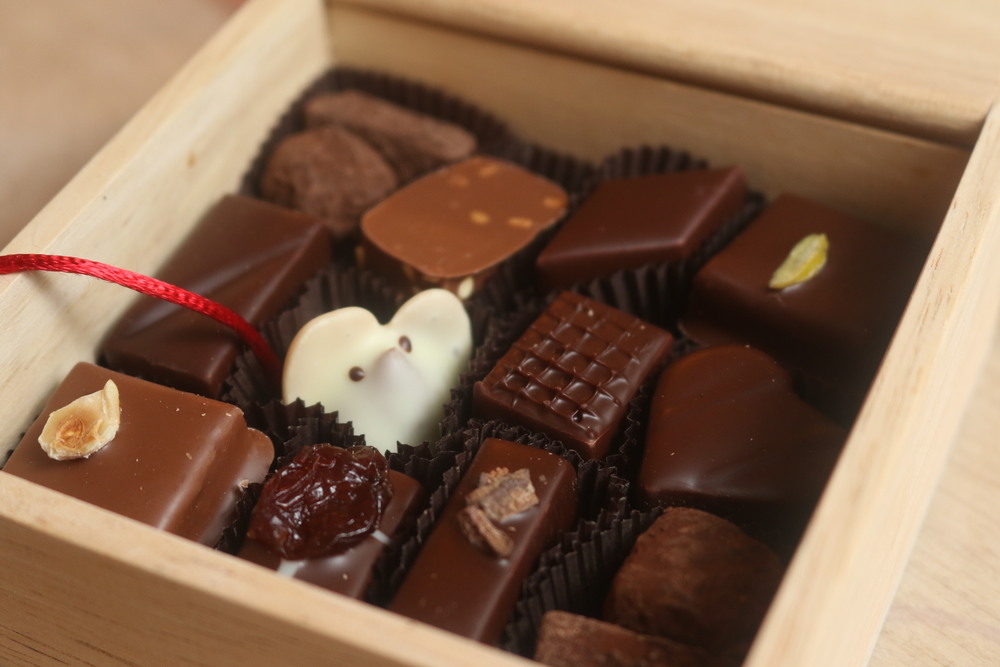Photo courtesy Flickr user Linus Bohman
You might not have the years of training to judge a chocolate competition or the taste buds to discern the flavors of raspberry from blackberry in a 70 percent Madagascar bar, but rest assured, you are a supertaster.
That’s because you know what you like to eat best of all. People can tell you that one type of cacao is better than another or one brand is better than another, but at the end of the day, you like what you like.
Too often with high-end foods we’re told what tastes good and what tastes bad, or we’re ashamed when we don’t taste the flavor nuances that someone else describes. I’ve had this experience time and time again: For example, I like Fine & Raw’s salty bar, even though many experts will say it’s not great chocolate. I call it an “eating bar.” I might not sit around and discuss the nuanced flavors in it, but I could happily munch on it after dinner. I’ve also tried tons of chocolate bars and been dismayed that I didn’t taste the notes of starfruit or rye bread or whatever else I “should” have tasted.
Part of that is because we’re all still learning the language to describe what we taste. Translating the experience from our tongues into talk is tricky. Recently I sat in on Whole Foods’ tasting panel, a group of people who have been trained to identify different flavors in food, like the distinction between the taste of brown sugar and caramelized sugar in a milk chocolate. It was fascinating, and proved that anyone can be a supertaster.
In all practicality, though, most of us aren’t going to study 20 types of sugar, 50 types of cacao, and so on. That doesn’t mean we’re disqualified from liking what we like, though. Trust your intuition. Taste freely, and when you find something you like, eat it with abandon.
Do you agree? Disagree? I want to hear from you! Email me at megan@chocolatenoise.com or write me on Facebook or Twitter and tell me what you think and I'll include your comments in the next Chocolate Today.
Reactions
On "Eating Bars"
“Nice to know other people have an ‘eating bar.’ I buy giant 125g bars of dark chocolate from Aldi. They’re nothing special, but it satisfies the sweet craving.
Like what you like!”
— Jason Warner, email
@MeganGiller @chocolatecodex I do. I describe what chocolate is good for if it’s not highly rated. Baking, eating, thinking chocolate.
— ChocolateAdvocate (@ChocoAdvocate) March 22, 2016
@MeganGiller @comconnoisseur Freedom to like what one wants, recognizing that liking a thing doesn't necessarily mean it's good.
— Scott DFW (@dallasfoodorg) March 23, 2016
On "Supertasters"
“Quick comment about your assertion that anyone can be a super taster. Based on what I was taught, that isn’t actually true. Years ago I took an oenology class at UC Davis. One of the things we were being shown was how to identify certain off flavors in wine. The message that came through loudly from the instructors was that yes, anyone can improve their ability to identify flavors and aromas with practice. But not everyone can be a super taster. Tasting is a physical skill and, like most other physical skills, we all don’t have the same natural abilities. Like great athletes, super tasters were born with more natural potential in their flavor receptors. But they need to be developed too or else the potential is never realized.
So this means that an average person, with practice, can indeed get much better at identifying what they are tasting. They can even be better than someone with more natural abilities who has never developed their skills. But they can’t be a super taster unless they have the ingoing natural equipment AND work to develop it.
I understand your desire to empower people to own their tastes. It’s a laudable goal. Too many people eat or drink what they think they “should” like and they waste a lot of money on products whose properties or subtleties they can’t or don’t really appreciate - especially with items that have a perceived sophistication about them like wine or liquor, and maybe chocolate too. I’m not sure where it sits on the sophistication scale but I’m a daily nibbler of Green & Black 85% dark. I’ll own that.”
— Donald Wright, email
“I agree that whatever each person likes is the best to them, but supertaster has a specific definition, so, unless each person fits that specific definition, I don’t think supertaster is the right word. I wouldn’t call people who like and appreciate colors tetrachromats, if they don’t have the ability to see extra colors. It’s the same with supertaster.
I don’t know if just eating chocolate requires a label. If it’s something you love and spend time researching and investigating, maybe aficionado or connoisseur.”
— George Gensler, Facebook
“But who wants to be a supertaster?
The problem with chocolate, as with coffee, tea, cheese, wine, etc. is that the supertasters whilst they can identify the finest nuances, they forget that the product has to appeal to a large group of people to be successful.”
— Julie Fisher, Facebook
Read more reactions on Facebook and Twitter!
What I'm Tasting Today
Guittard's Clair de Lune 85% Bar
Read More Stories!
From Boat to Bar: How Dick Taylor Chocolate Makes the Best Packaging in the Industry
Soma: 20 Ways of Looking at a Chocolate Bar
Dandelion Chocolate: How Two Tech Nerds Revolutionized Bean-to-Bar Chocolate























